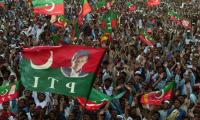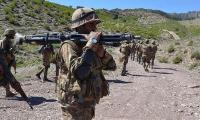Why should an elected government of a democratic country be bothered about a few thousand (or even a few hundred thousand) protesters marching to the capital?
How can one march or dharna, however large it may be, determine the destiny of a country of 220 million people when the rest of the country has not erupted in spontaneous protests? Even after eleven years of continuous democratic governments, the democratic system remains a castle of sand.
The current situation shows the limits of what is often termed as the ‘transition paradigm’, a belief that that democracy works like an escalator. Once we get on it, it goes up and up. At one time, this framework was so popular that some termed it ‘transitology’. Transitology is based on the belief that “any country moving away from dictatorial rule can be considered a country in transition towards democracy.”
Going by the transition paradigm, we should be in the phase of consolidation. Consolidation is defined as “a slow but purposeful process in which democratic forms are transformed into democratic substance through the reform of state institutions, the regularization of elections, the strengthening of civil society, and the overall habituation of the society to the new democratic rules of the game.”
For the last six years at least, we have hardly been going through any purposeful process in which democratic forms could be turned into democratic substance. During the previous PML-N government’s tenure, institutional reform remained stalled and institutional conflict created a logjam in the system, stalling not only our democratic progress but creating a wider instability that pulled down economic development as well.
This situation should have been resolved under the PTI government which has mostly been seen as conflict-free in the above context. However, we see no signs of democratic consolidation or political stability. The PTI’s burning desire for single-party hegemony has thwarted any hopes for political stability. Rather than consolidating democratic rules of the game, parties have reneged on earlier agreements made for the purpose.
Democracy allows people to protest peacefully. Much of the public protests all over the world are aimed at demanding better services or convincing the government to change its policies. In rare cases, people take to streets to force a government to resign.
In democracy, such protests only have a moral value. Whatever the size or nature of these protests, they cannot take away the constitutional right of a government to make policies or govern a country. On February 15, 2003, one million protesters took to the streets of London to oppose the looming war against Iraq.
Large peaceful protests were also held all over the country and around the world. Up to 60,000 protesters gathered in Glasgow and up to 90,000 in Dublin, while Italy had the biggest protest, with an estimated two million peace campaigners on the streets of Rome. However, the elected governments in Europe refused to listen to the protesters and sent their armies to support the US in the Iraq war.
However, peaceful protests can be very hard to handle for weak-kneed monarchies and dictatorships where normal political activity is stifled. In the late 20th century, a number of movements have been able to demonstrate that longstanding dictatorships can be overturned without bloodshed.
Pakistan is no stranger to peaceful revolutions. Perhaps, it is the only country in the world that threw out three military dictators in the post-world war era. There have also been uprisings that turned out to be counter-revolutions and resulted in dictatorships. In 1977, the PNA movement popularly known as Tehreek-e-Nizam-e-Mustafa succeeded in overthrowing the elected prime minister only to bring in the dictatorship of Ziaul Haq.
Dharna technology is a different ball game altogether. It benefits from the freedom of assembly allowed in a democracy and feeds on the weakness of the state. The main aim of the dharna is to make the media hostage by occupying a strategic space over a prolonged period. These kinds of dharnas would not be possible in a world before 24/7 electronic media, or in a small city.
Dharnas succeed in exposing the weakness of the state and its failure to protect public property and its citizens. By exposing this weakness and creating an environment of uncertainty, dharnas intend to pursue government change or force a government into accepting their demands. If nothing else, a dharna can force a government to use force, substantially erode legitimacy of an elected government, and bleed it by a thousand cuts.
Though first employed by Tahirul Qadri in January 2013, the dharna technology was used to its full force when Imran Khan arrived with his Azadi march and Qadri with his Inquilab March in December 2014, and staged a joint dharna at Islamabad’s D-Chowk. This dharna ended after 126 days without delivering us azadi (freedom) or inquilab (revolution). However, it succeeded in weakening an elected government and creating political instability. Khadim Hussain Rizvi showed that even 1800 people occupying a strategic place in the capital can freeze a state of 200 million people for 20 days.
The PTI government has created an environment in which most parties in the opposition have nothing to lose. Maulana, a political opponent Imran Khan has singled out for humiliation, has gained significant political weight even before the march has started. Maulana’s march brings new hope to political parties as it can very well thwart the PTI’s ambitions of single-party hegemony. It can also result in some relief from the relentless pressure they are under. It may also result in reversing the poisonous political narratives used against them.
However, Maulana’s march, like earlier assaults on the capital will harm Pakistan’s economy and add more poison to national politics. It will make it difficult for the government to force traders to pay their taxes. The challenge of showing progress on 20 points under the FATF will become more difficult; it will become harder to attract jittery investors that Pakistan does not have much to offer to anyway.
Islamabad is bracing for a siege. Pakistan was never so vulnerable to this kind of political turmoil. But Diesel makes a good joke and how can one not throw a good bouncer when an enthusiastic crowd is cheering.
The writer is an anthropologist and development professional.
Email: zaighamkhan@yahoo.com
Twitter: @zaighamkhan
Economic nationalism remains potent political narrative, influencing both Republican and Democratic platforms
Yes, blockchain, decentralised and distributed ledger technology, is foundational backbone of cryptocurrencies
Blue carbon covers merely 2.0 per cent of ocean surface but absorbs 50 per cent of carbon dioxide
During WWII, Japan’s economy and national morale were plummeted by its doomed alliance with Germany
More than 40 persons, including women and children, were killed in Parachinar
After November 30, it will be impossible for ordinary internet users to access all banned websites, including X







